Remember Chavez Ravine! A Los Angeles Story
It is opening day of the 1981 Dodger baseball season, Fernando Valenzuela (Herbert Siguenza) is on the mound getting ready to pitch when the spirit of two former Chavez Ravine residents Maria Ruiz (Sabina Zuniga Varela) and her brother Henry Ruiz (Ric Salinas) appear before him. Seen only by the audience and Valenzuela, Maria and Henry begin to recount the history of Chavez Ravine, reminding Fernando that he is standing on “sacred land.” Renowned Chicano theatre trio Culture Clash—Richard Montoya, Siguenza, and Salinas—revived Chavez Ravine for a run at the Kirk Douglas Theatre in Culver City, California as part of the 2015 Center Theatre Group season. Written and performed by Culture Clash, directed by Lisa Peterson, and originally premiered at the Mark Taper Forum in 2003, Chavez Ravine 2015 reminded audiences of the urgency of Chicana/o voices on stage. The play brilliantly presents a history of 1950s Los Angeles, focusing on the backroom politics which displaced over 3,000 men, women, and children living in the thriving Mexican American neighborhoods of Bishop, La Loma, and Palo Verde—Chavez Ravine. Weaving together oral history interviews of former Chavez Ravine residents and city officials, newspapers, maps, photos, scholarly accounts, and memoirs of politicians from the time period, the trio brought this dramatic narrative of Cold War politics and community resistance to life working alongside Varela, and the musical talents of Vaneza Mari Calderón, Randy Rodarte, and Scott Rodarte. Utilizing an unapologetic Chicana/o theatre aesthetic, they centered the story around the perspectives of those on society’s margins, strategically using satire, comedy, and music to interrogate the past as it converses with the present.
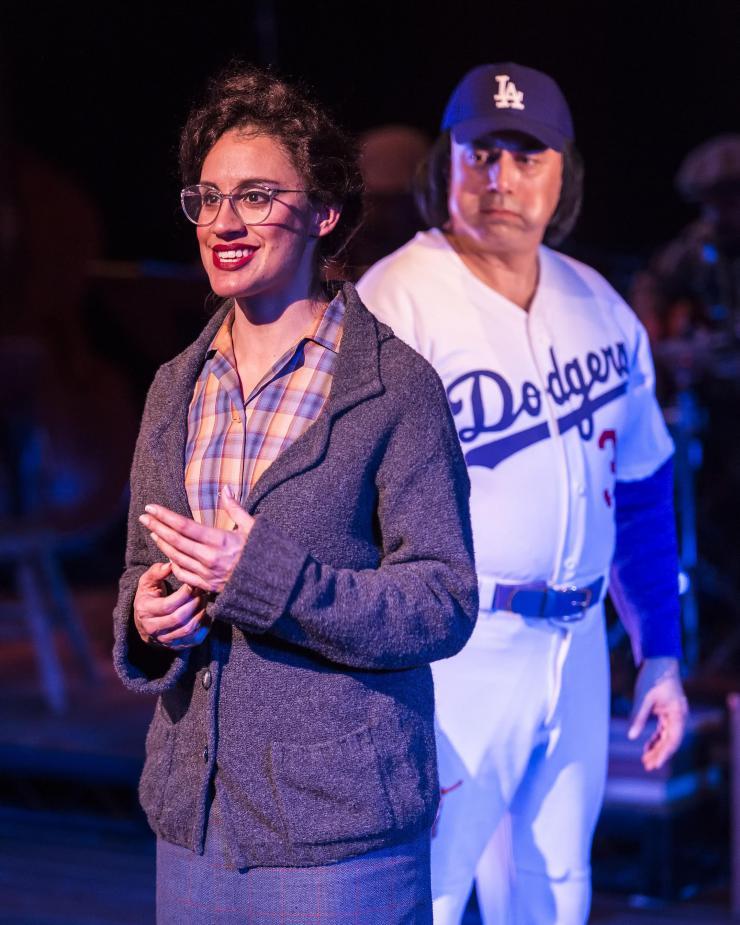
Manazar Gamboa (Siguenza), the late poet from Bishop narrates Chavez Ravine, and speaking directly to the audience, he introduces the early history of the area. From him, we learn that many of the families of Chavez Ravine immigrated from Mexico in the early 1900s. In 1949, Los Angeles Housing Authority Site Commissioner, Frank Wilkinson (Montoya) identifies the Chavez Ravine neighborhoods as “blighted” and using the full force of the Federal Housing Act, he gains control of the land through the “eminent domain” clause. Ravine families, led by a young Mexican American woman, Maria Ruiz, immediately mobilize against the conversion of their private land into city property for the “greater public good.” Maria portrays the Mexican American women who led the struggle against the city power brokers, and even pushed back on their own community members who bought into the proposed housing project. As four actors and three musicians play over thirty different characters, they capture some of the many layers in this complex story, which disrupted a community and divided families. Maria’s brother Henry decides to sell his house to the city. His mother (Montoya) pleads for him not to disrespect the labor and love that went into building the home, and with great pain tells her son he is no longer welcome in her home once he decides to leave.
Utilizing an unapologetic Chicana/o theatre aesthetic, they centered the story around the perspectives of those on society’s margins, strategically using satire, comedy, and music to interrogate the past as it converses with the present.
At the same time, more sinister plans are underway to end the housing project. Culture Clash deftly depicts the “committee of twenty-five” White men, including politicians and entrepreneurs, as Mr. Mover (Salinas) and Mr. Shaker (Montoya), scheme to undercut Wilkinson and profit from the Chavez Ravine land. In this film noir-like scene, while the historical picture of the committee beams overhead, another shadowy figure intended to represent The Los Angeles Times, The Watchman (Siguenza), suggests killing the housing project by labeling it socialistic and un-American. Together, they conspire to elect a city Mayor who can serve as their puppet. Mayor-select Norris Poulson (Salinas) convinces Walter O’Malley (Montoya) to consider Chavez Ravine as the home base for his Dodgers. To seal the “sweetheart deal,” the city gives 315 acres to O’Malley, prepares the land with 4.7 million Los Angeles tax dollars, and allows O’Malley to keep mineral rights, parking, and concession stand revenues—which of course is not viewed as corporate socialism. Reminding the audience of the vaudevillian ridiculousness of this historical moment, in one scene Culture Clash gives a glimpse of the radio marathon, where celebrities advocate for the Proposition B, and Abbott (Siguenza) and Costello (Salinas) perform the sketch “Whose On First” in English and suddenly begin to recite the words in Spanish to a rousing audience applause and laughter, “Quién está en primera base? Yo No Sé!”
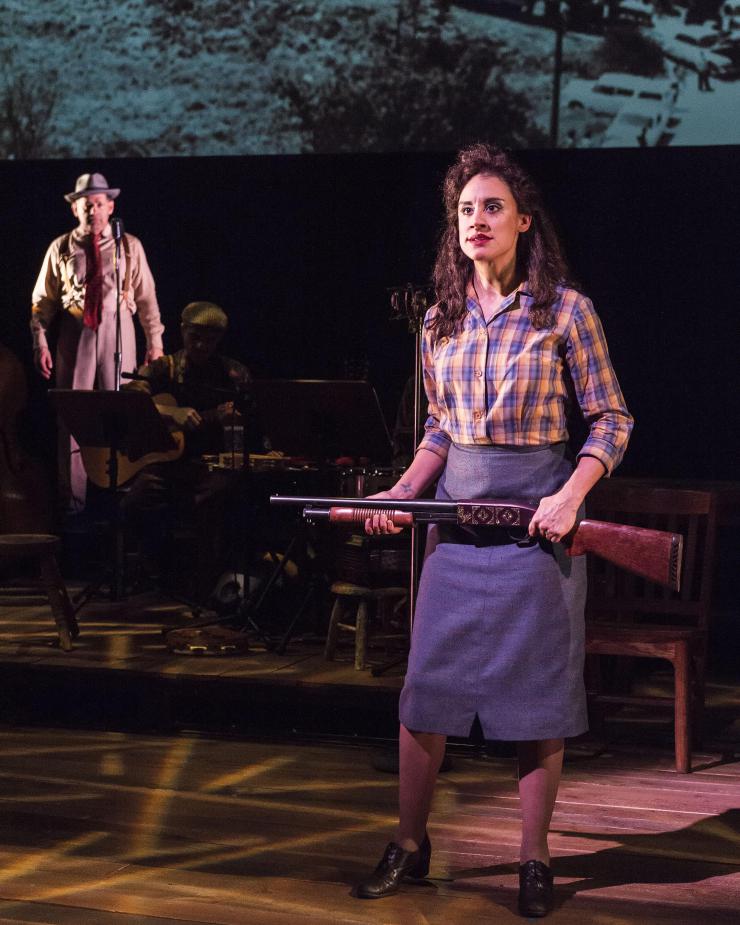
Chavez Ravine’s story of Mexican Americans struggling to save their homes in 1950s Los Angeles reveals their courage in the fight for justice and affirmation. Their contributions to a legacy of resistance rarely take center stage in US theatre productions. As a form of public history, Culture Clash approaches Chavez Ravine knowing that “community memory is a precious thing” (quoted from Montoya, 2003). The play challenges audiences to face and reflect on the “colonial ghosts” of our beloved City of Angels, personifying the former residents’ resilience despite daunting economic hardship in the face of powerful foes.

The talented cast portrays the Mexican American community with dignity, eliciting empathy from Angelenos, Dodger fans, and youth, who witness an often-neglected part of our collective history. They rapidly transform from one character to another, seamlessly and bilingually, keeping the pace of the play quick, witty, and engaging. Carrying on the tradition of Chicana/o social protest theatre, the trio continues to evoke laughter and skillfully deploys their comedy with an overt political purpose to teach and critique, and most of all, to subvert authority.
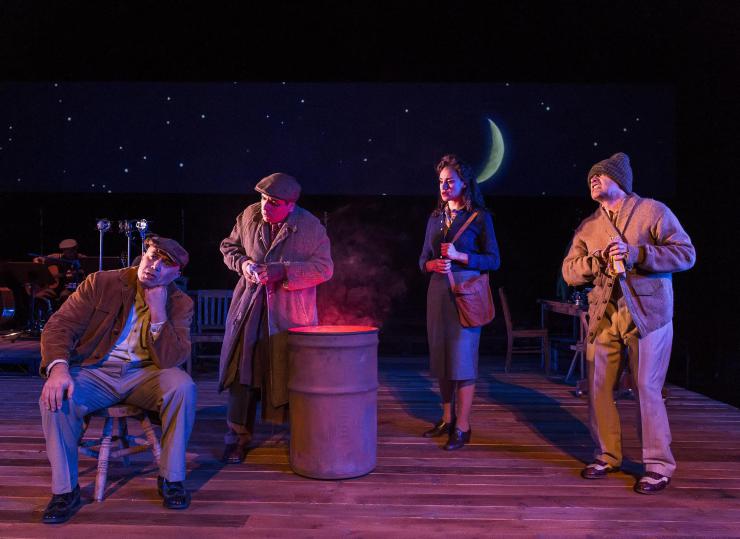
Silence befalls the stage as original footage of the real life Chavez Ravine evictions are projected. As we watch images of sheriffs forcefully carrying a member of the Arechiga family out of her house, we feel a deep sense of sorrow and anger. Yet we also feel pride in seeing her determination to fight for her family and home. Action on the stage resumes. Maria stands defiantly with a shotgun and declares,
You will remember this name, Arechiga, Cabral, Casos, y Lopez, Perez, Ramirez. You took our sons to fight your war. And now you take our homes. Our land. Mi casa no es tu casa. Y sabes qué? Why don’t you tell the pinche sheriff to build a stadium in his own goddamn backyard.
Sheriffs seize her weapon and escort Maria out of her home. The scene positions the organized protests of Ravine residents as precursors for the Chicana/o Movement of the 1960s, an important history lesson indeed.
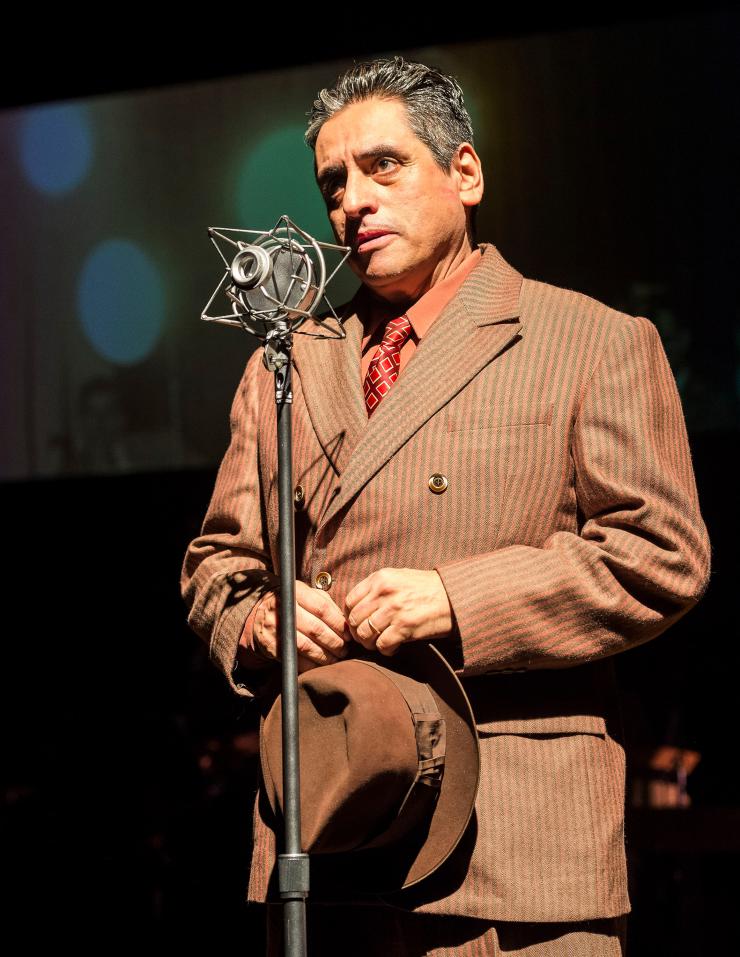
As the play comes to an end, Manazar reminds us, “Memory cannot be flattened. Memory is history singing in tune with the stars, and no sheriff’s baton can reach that high.” As the 2015 baseball season gets underway and thirty-four years after number 34, Fernando Valenzuela pitched on opening day 1981 at Dodger Stadium, we remember Chavez Ravine!



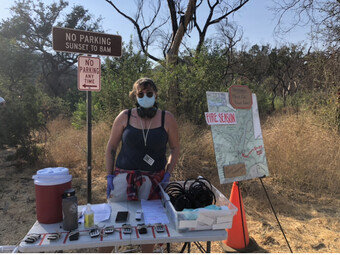




Comments
The article is just the start of the conversation—we want to know what you think about this subject, too! HowlRound is a space for knowledge-sharing, and we welcome spirited, thoughtful, and on-topic dialogue. Find our full comments policy here